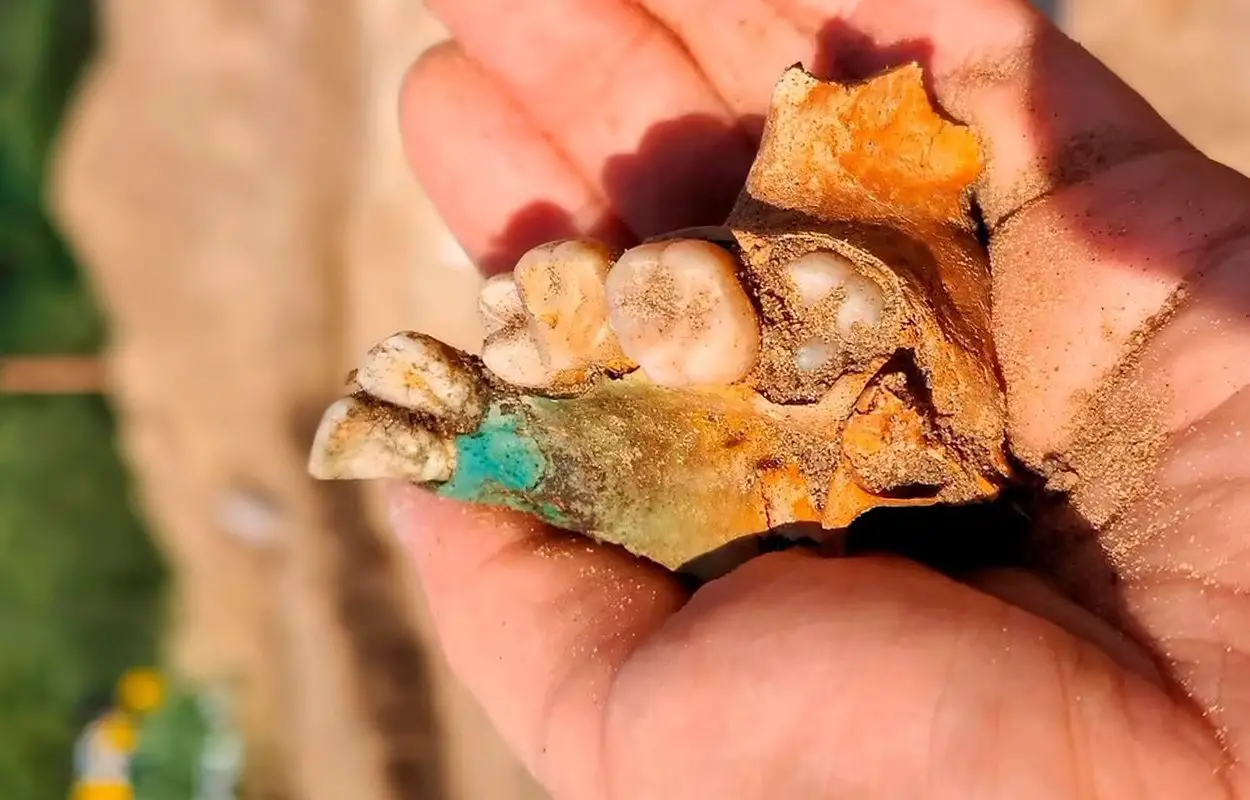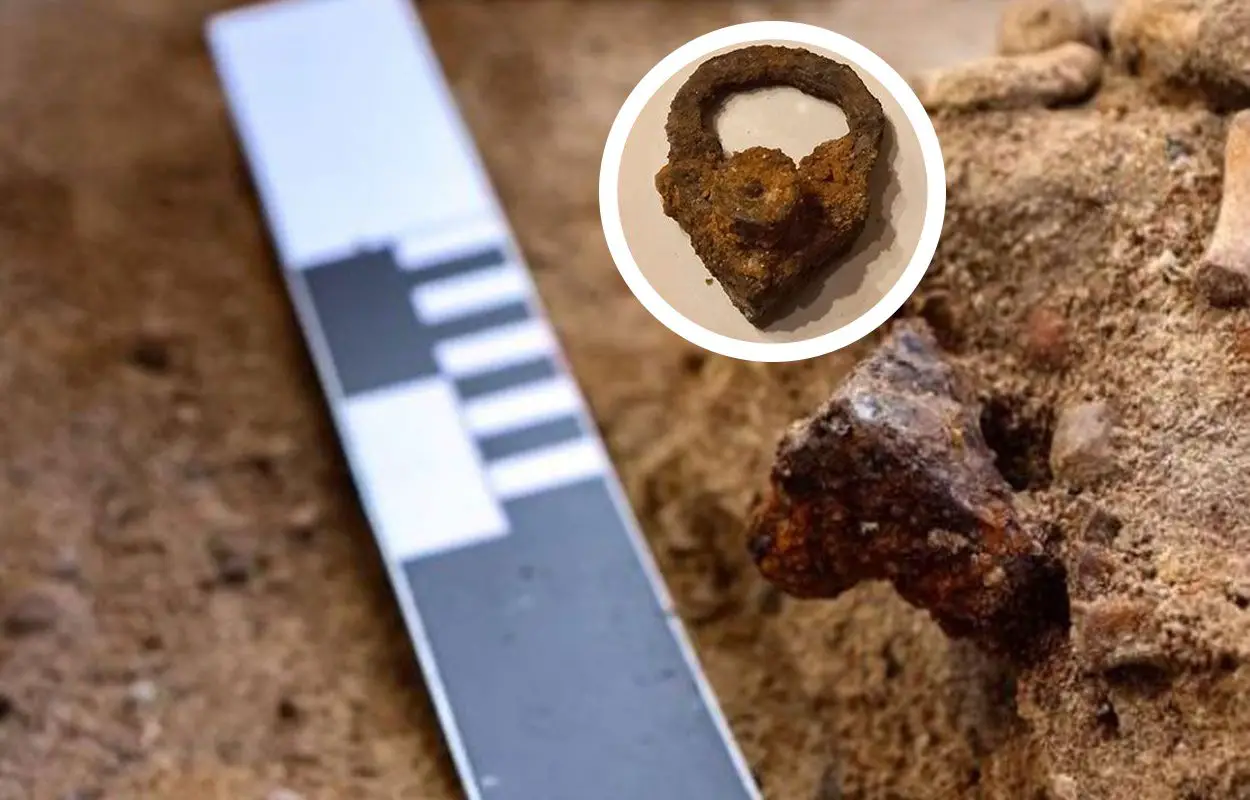Archaeologists from the Institute of Archaeology of the Nicolaus Copernicus University (NCU) have uncovered a child buried face down with an “anti-vampire” triangular padlock.
The discovery was made near the village of Pnie, located in the Pomeranian Voivodeship in Northern Poland. The burial, which dates from the 17th century, was found adjacent to the padlocked “vampire” burial discovered in 2022 where the deceased was buried with a sickle over the neck to prevent the ascension to vampirism.
The concept of a blood-sucking spirit, or demon consuming human flesh, has been told in the mythology and folktales of almost every civilisation throughout the centuries. During the late 17th and 18th century, the folklore for vampires as we imagine became rampant in the verbal traditions and lore of many European ethnic groups.
They were described as the revenants of evil beings, suicide victims, witches, corpses possessed by a malevolent spirit or the victim of a vampiric attack. During the 18th century, vampire sightings across Eastern Europe had reached its peak, with frequent exhumations and the practice of staking to kill potential revenants. This period was commonly referred to as the “18th-Century Vampire Controversy”.
The child burial was originally buried face down, which according to the rituals of the time was meant to cause the deceased to bite into the ground if ascended. At a later date, most of the remains were removed, leaving only the lower leg which was padlocked under the heel.
According to Dr. Dariusz Polinski from the Nicolaus Copernicus University, the padlock was placed to protect the living from the deceased and symbolised the closure of the final stage of life.

Near to the child’s burial, archaeologists also found a pit containing the remains of three children. In the pit was a fragment of a jaw with green staining, in which tests of the elemental composition has shown traces of gold, potassium permanganate and copper.
The researchers suggest that the staining was caused by a potion that was concocted to treat “vampirism”, while the wider cemetery was likely a place of burial for people rejected by society, both during life and after death.
Nicolaus Copernicus University (NCU)
Header Image Credit : Nicolaus Copernicus University (NCU)





